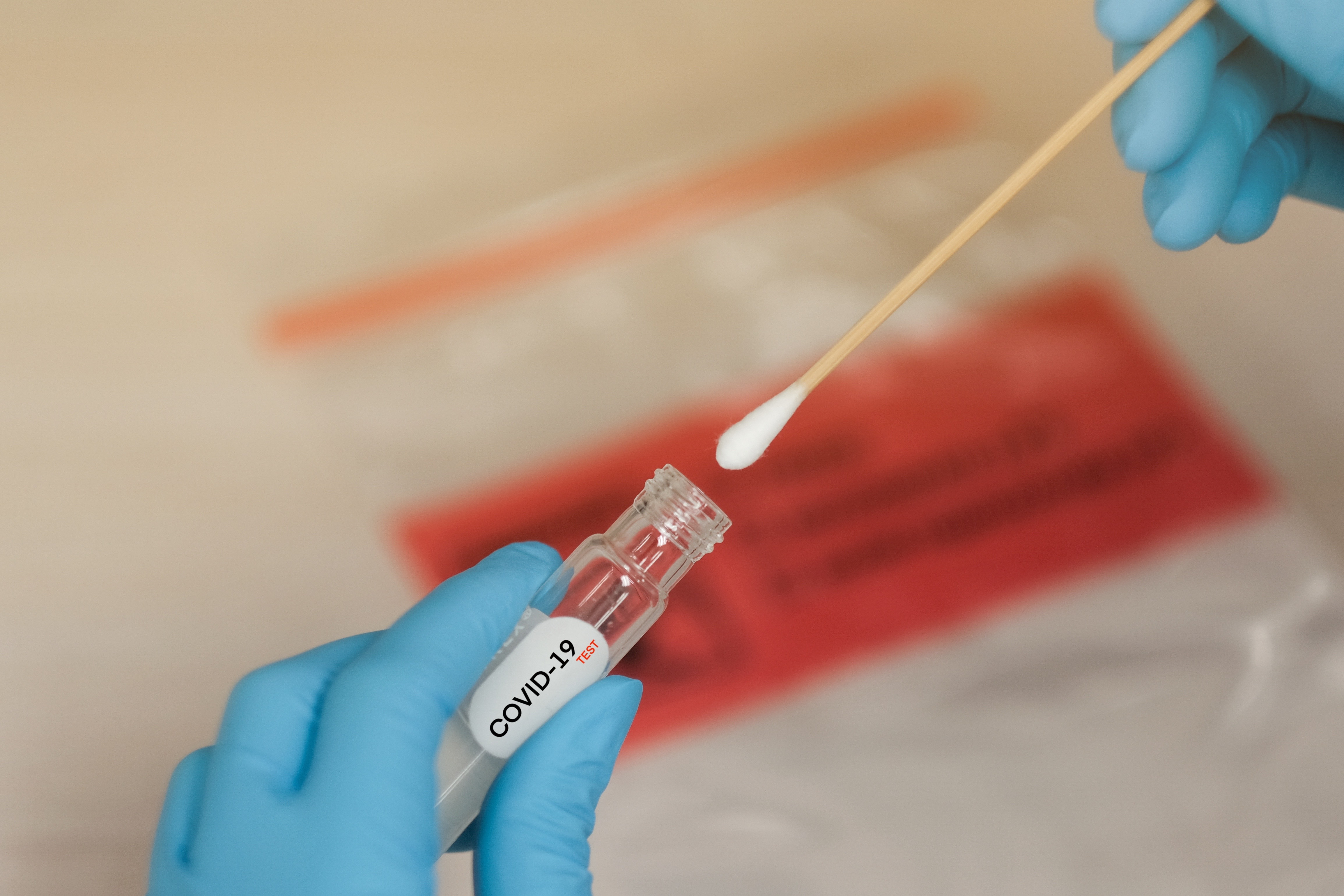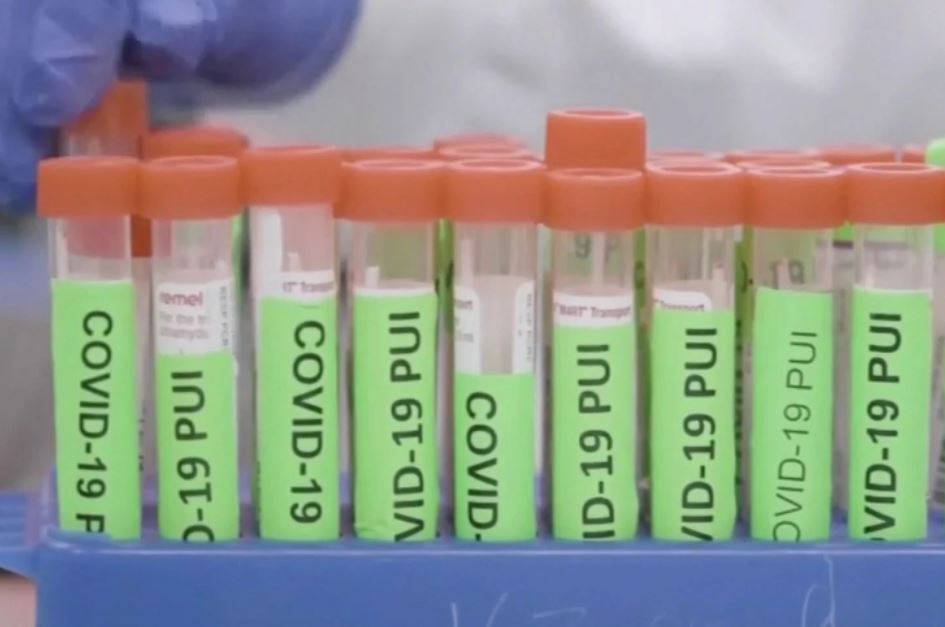The BA.2 omicron subvariant is expected to make up most of Chicago's COVID cases by the end of the month, the city's top doctor said Tuesday.
Noting a small increases in cases, Chicago Department of Public Health Commissioner Dr. Allison Arwady said while the COVID risk remains low in the city, data shows the number of cases of the BA.2 subvariant are doubling every week.
"All we're seeing right now in Chicago and across the Midwest is omicron. We are seeing two primary subvariants of omicron: the B1, which is the one that hit us through the surge, is still about 69% and BA.2, which is the one that we're watching and is more contagious than B.1 and probably some of what is driving that increase around the world, is just over 30% at this point. In Chicago, we've seen that BA.2 doubling about every seven days, so we do think we'll see predominance, meaning most of our cases will be that BA.2, by the end of the month."
According to estimates from the Centers for Disease Control and Prevention, the BA.2 variant made up 30.6% of all COVID cases in several Midwest states, including Illinois, Minnesota, Wisconsin, Michigan, Indiana and Ohio.
Arwady highlighted that in some states along the East Coast, BA.2 is representing an even larger portion of cases.
"New York, Connecticut, Pennsylvania, most of their cases already are BA.2," she said.
Chicago's COVID metrics saw slight increases over the last week.
The average daily number of new cases in Chicago started to climb to 156, up from 136 the previous week, though it continues to remain well-below the 5,189 seen earlier this year.
The positivity rate also climbed slightly to 0.8%, up from 0.7% last week.
Feeling out of the loop? We'll catch you up on the Chicago news you need to know. Sign up for the weekly Chicago Catch-Up newsletter.
Hospitalizations, however, are averaging 9.57 per day and deaths dropped to 0.71 per day, both marking significant decreases from the omicron peak earlier this year and declines from the week prior.
While Arwady stressed that the city remains at low levels, she noted that she and public health officials are still watching to see what happens in the coming weeks.
"At this point, we've not seeing major signs like we're seeing in Europe, but while we continue to watch, we'll have a better sense of this honestly, probably by the end of the month when BA.2 will be predominant here," she said.
As most COVID-19 restrictions are relaxed across Europe, including Austria, Britain, Denmark, Germany and France, the numbers of infections have inched higher in recent days. In the last two weeks, COVID-19 hospitalizations and deaths have both risen slightly in Britain.
The uptick is driven in part by BA.2 and by people largely abandoning masks and gathering in bigger groups.
"We are very much seeing large surges of COVID in much of Europe," Arwady said, adding that "parts of this world right now look like Chicago did in early January in terms of numbers of cases."
"The good news is that most of these countries are very highly vaccinated and we are not seeing those cases in most situations, translating into a large number of hospitalizations or deaths," she said.
Experts said they're watching closely, particularly as restrictions continue to lift across the U.S., but many say that even if a surge like those in Europe is seen, it likely won't be to the level reported earlier this year.
"I'm not expecting a big surge here, but we're gonna have to pay close attention and really be driven by data as we have throughout the whole pandemic," White House COVID-19 Response Coordinator Dr. Ashish Jha said last week.
White House chief medical advisor Dr. Anthony Fauci also said he expects "an uptick in cases" due to BA.2, but not necessarily a massive surge like other variants have caused.
"This is different than the switch from delta to omicron. That truly was a much more drastic change in the virus and that's where we really saw transmissibility increase magnitudes above delta," Huhn said. "This is more of a slight variation and so we're not seeing the transmissibility really accelerate as we did when we switched from delta to omicron."
Dr. Isaac Ghinai, medical director for lab-based surveillance at the Chicago Department of Public Health, said he doesn't believe BA.2 will lead to a surge like the one previously seen during the omicron peak, but changes are expected "at some point."
"We're at a nearly historic low in terms of COVID here in Chicago, it's very likely that there may be some changes in transmission," he said.
BA.2, also known as "stealth omicron," is considered a subvariant of omicron.
BA.2 has several key mutations, with the most important of those occurring in the spike protein that studs the outside of the virus. Those mutations are shared with the original omicron, but BA.2 also has additional genetic changes not seen in the initial version.
So far, it has not yet been declared a variant of concern on its own.
"BA.2 is part of omicron," said Ghinai. "Omicron is a variant of concern, therefore BA.2 is a variant of concern. Same as BA.1 is a variant of concern."
According to several health experts, BA.2 appears to be more transmissible than omicron.
"There's four unique mutations in the spike protein that are distinct in BA.2, and different from BA.1. ... It seems that these mutations will propel the transmissibility to about a 30% to 50% higher degree of contagiousness than the BA.1 variant," said Dr. Gregory Huhn, an infectious disease physician and the COVID-19 vaccine coordinator for Cook County Health.
Northwestern's Dr. Michael Angarone, an associate professor of medicine in infectious diseases, said the increased transmissibility could be particularly strong in close contacts of those infected, but it's still too early to tell.
"We're still trying to figure out why are we seeing this rising number of cases in some of these countries in Europe and that is because there's something markedly different about the virus," he said. "So is it more transmissible? Are more people going to become infected from one infected individual? There might be some markers of that."
Angarone said Europe is typically up to a month ahead of the U.S. in its COVID outbreaks.
"We often look at Europe as being that kind of bellwether of 2, 3, 4 weeks kind of ahead of us," he said. "So are we going to see this kind of increase in a month or so? And we just don't know."
Preliminary data indicate vaccinations and boosters are similarly effective in preventing symptomatic cases of BA.1, the original omicron variant, and BA.2.
According to Ghinai, evidence so far also suggests infection with one omicron sublineage is believed to provide protection from other omicron sublineages, but Huhn noted that reinfection is possible, though rare.
Arwady stressed that while the rise of COVID in other countries could be a sign of what's to come, it's not a guarantee.
"We didn't see any of the countries that are significantly surging with BA.2 get anywhere near back down to where we are in Chicago or even in the U.S.," she said. "I also think we are testing a ton and so we are detecting a huge percentage of the cases that we're finding and when I'm looking at settings that are not detected, it tells you there's a lot of asymptomatic or people who are not just getting comfortable in this too. So I don't have as much concern because we got through BA.1 and kind of came all the way back down. But... you have to be humble when you're talking about this. And that's where I think we're watching for that when it gets to be the predominant one."
Any return of mitigations, she said, will be dictated by the city's metrics.
"As we've been doing all along, we follow these metrics, we get to a place where we're seeing some increases we might recommend masks, for example," she said, noting that "it but it would be based on cases, hospitalizations, etc. not just what we're seeing and variants."



